There are a number of reasons why we want to remove old finish coat on doors, furniture or other objects: the paint coat is cracked or chipped, the current color is too dark and we want a lighter one, the wood is painted and we want it varnished to show the grain, we don't know what kind of paint was originally used and don't want to risk the new coat peeling, etc. One of the preferred methods of removing old coat is stripping. Why it is a preferred method, how stripping is done, what materials are used and how to prepare the wood for repainting is explained below.
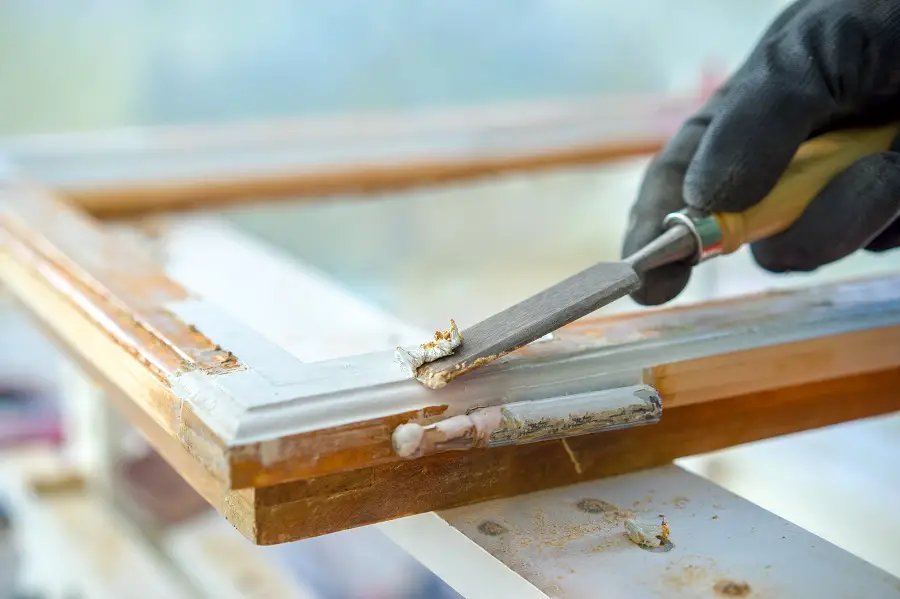
When stripping is the recommended method to remove paint from wood surfaces
According to the DEX, pickling is the removal of grease or oxides from metals. However, the term has also been adopted for cleaning wood, and the solution used for this purpose is called paint stripper. Names of pickling solution in English paint remover or in Italian paint stripper, are more accurate because they refer strictly to paint removal. But the market has adopted the term paint stripper and under this name you will find the solutions in specialty stores.
We choose stripping especially when the shape of the object or the carvings present on the surface of the wood make removing old paint layers by other methods to be very difficult. The best method for such surfaces would be sandblasting with less harsh abrasives (baking soda, crushed walnut shells, corn cobs), but it's harder to find wood sanding specialists and the method is expensive.
Stripping doesn't cost a lot of money and doesn't require special equipment or special skills. It takes patience because it's not enough to just apply a coat of paint stripper and the problem is solved. Most of the time the procedure needs to be repeated 2-3 times to completely remove the paint. After applying the paint stripper, the paint will soften and must be removed with a scraper. Thin tools must be used on difficult surfaces and often the surface also needs to be washed with thinner to thoroughly clean the wood. I did this when I cleaned the doors of the Church of Santa Claus. Find here detailed step-by-step information.
Are there different kinds of paint stripper or just different brands?
Paint strippers are solutions that attack the paint, making paint removal much simpler. They are either very aggressive solvents or acids or bases that attack the bonds inside the resin, destroying it. Restrictions on the use of products now considered dangerous to health have made paint strippers less and less aggressive. In a way, I agree with those who say that "in their day", paint strippers were better. Yes, they were much more aggressive and very rarely had to be repeated, but they were also much more dangerous.
The three main types of paint strippers
- Aggressive solvent mixtures
- Stripping solutions for natural oils or alkyd paints and varnishes
- Universal waterborne universal paint strippers
Solvents are used more in factories because their strong odor is hard to bear. In factories, there are powerful exhaust systems that remove solvent vapors, but even so it is difficult to work without a mask and protective equipment.
Oil and alkyd paint strippers are based on caustic soda. They attack the inner bonds in the resin, turning the paint, oil or varnish into a liquid that washes out with water. The problem in this case may be the water used for washing. On old and sensitive objects, too much water may not do any good. But if the wood is sound, this method is preferable because it easily and thoroughly removes old coatings.
Universal water-based paint strippers are the most commonly used. They are generally in gel form because they take time to work. If you have a choice between a liquid and a gel stripper, choose the gel, it's much more effective. The differences between the different brands are due to the concentration of the active substance, hence the greater or lesser effectiveness of the products. Only by testing them can you determine which is better. Until recently, I thought that Decanol, from Policolor, was a good stripper. I even recommended it many times. I worked with it 8-10 years ago and it was very effective. A couple of months ago, when I was working on the doors of the Pitar Moș church, I tested three paint strippers: Decanol, Dekapant gel Kober and Supralux universal extra strong stripper. Out of all of them, Decanol was the weakest, Supralux paint stripper being far more effective.
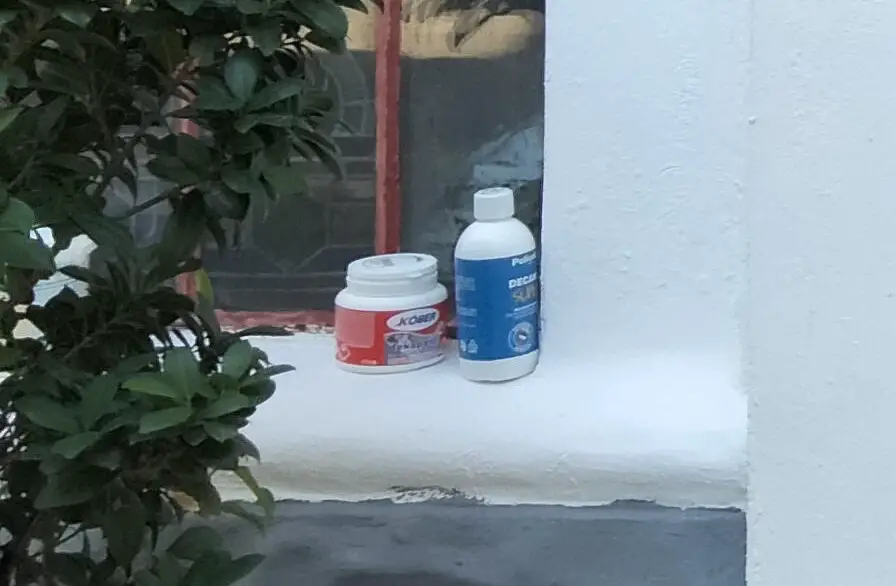
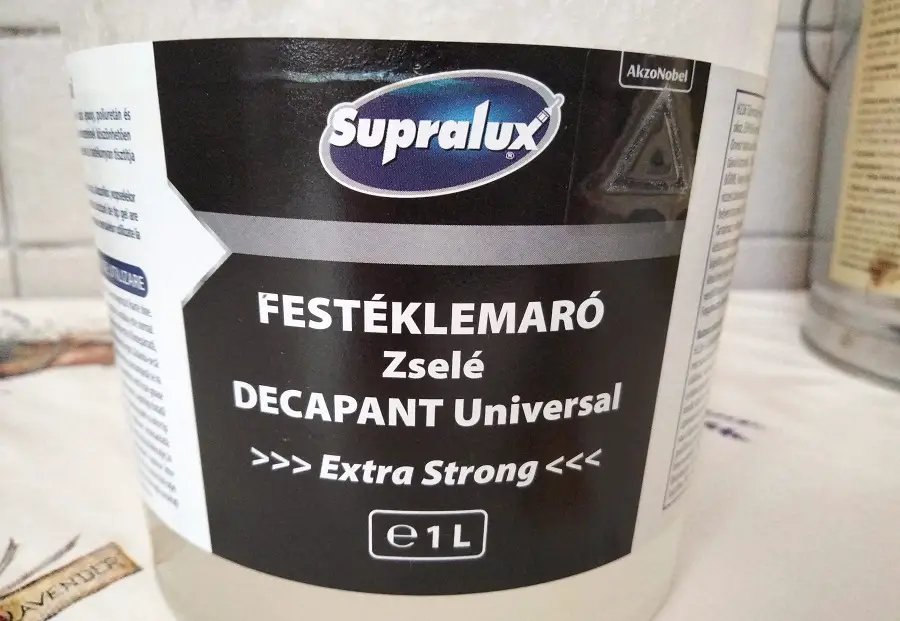
Paint stripper application and removal
The paint stripper is applied with a brush in a not very thin coat and left for the time recommended by the manufacturer, usually between 20 and 30 minutes. During this time the paint layer softens and sometimes wrinkles a little. Paint stripper does not work well at very low temperatures. Avoid drying it at high temperatures. A damp, wrung cotton cloth placed on top prevents drying and may increase the effect on the paint coat.
The soaked layer is removed with a squeegee, a narrow chisel or a wire brush with coarse bristles and bonnets. The brush is effective when the surface has intricate patterned carvings. It is not simple and takes a lot of patience. Soaked varnish often clings to the brush and must be left in thinner to clean well. If the surfaces are straight, cleaning is simpler and quicker. Very rarely the surface is completely cleaned in one operation, but the hardest is the first time. Over time the paint becomes softer and easier to remove.
After total removal of the paint coat, the surface sometimes remains sticky and should be wiped with a thinner recommended by the paint stripper manufacturer. If there is no such recommendation, use a washing or universal thinner. If wiping with a cloth is not sufficient, apply the thinner with a brush and wipe with a clean cloth.
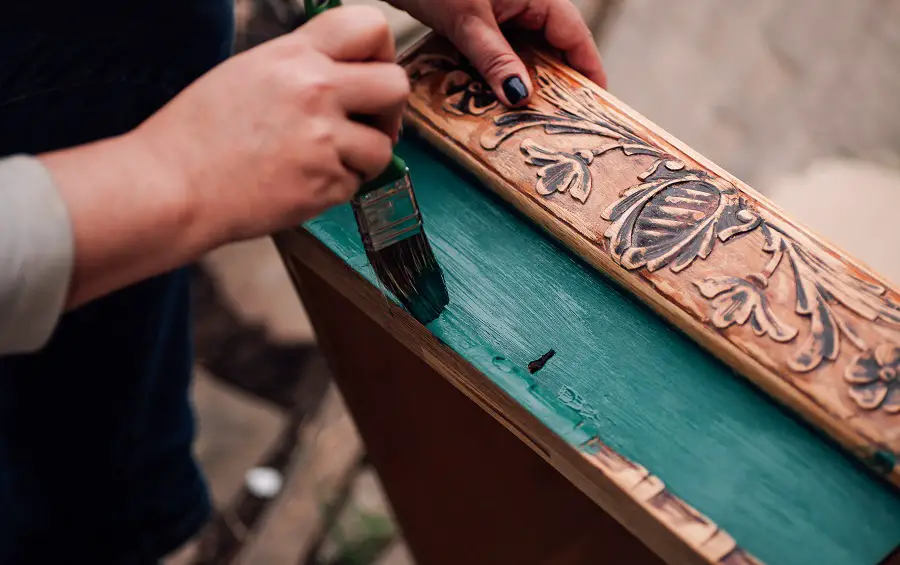
Preparing wood for repainting
Before repainting, it is recommended to sand the wood as for white sanding. The old finish has penetrated into the pores of the wood, and to ensure uniform color and adhesion of the subsequent coats, the pores must be opened. This is the purpose of sanding. If staining is attempted without this sanding, the wood may not absorb enough and light spots may appear.
Sand with 150-grit sandpaper, or even 180 or 220 grit if the wood is honed or sanded (plopIt is then wiped with a cloth. The dust resulting from sanding spoils the appearance and reduces the adhesion of varnish or paint.
I hope you find the information interesting and useful. We always welcome additions. And if you have any questions or queries, please leave them below in the dedicated space. I will be sure to answer them.
























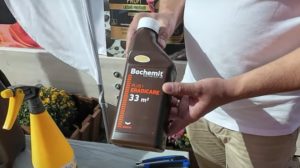
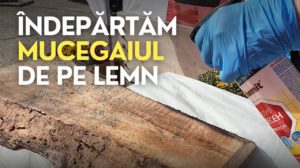







Thanks for the advice, I really needed this information.
Very useful information. Thank you!
I manually cleaned the door by removing the old paint from the door frame, but only that which was peeling easily. I washed it and degreased it with thinner. Before applying the primer, do I have to sand where I removed the paint? I use Sticky brand oil based, universal paint enamel. Thanks!
The problem with the remaining paint is that if there is very little peeling this will become more pronounced over time and the peeling will not be prevented by the newly applied coat. Sanding helps you to see if the peeling has started and removes those bits of paint. Sanding also helps to increase the adhesion of the new coat of paint to the old one left in place.
On the other hand, washing and degreasing the surface would have caused the paint to peel off if it was already chipped. If this didn't happen it means it's well attached. And it does not appear from the product data sheet that the old surface should be sanded.
In conclusion, you don't have to sand if the remaining paint is well attached to the wood.
Hello, I greatly appreciate all the information received through your articles. I have from my parents some pieces of "communist" furniture, classic, from the 80's, brown, lacquered, glossy. I would try to change their appearance (even the shape in places) and I don't know if the lacquered surfaces can be painted directly, just with a simple sanding, or should they be stripped with solvents and follow all the above steps. Thanks
Hello!
Thanks for your appreciation!
Lacquered surfaces can also be painted, but you need to ensure adhesion so that the new coat doesn't peel.
One possibility is to use Annie Sloan-type chalky paints. They're more expensive, but are made specifically to adhere to difficult surfaces. Surfaces don't need to be sanded, just degreased. Degreasing is done by washing with water and dishwashing detergent, after which the furniture is wiped with a soft cloth and left to soak. The first coat is applied thinly without diluting the paint. Brush until you feel the paint has set. After the first coat has dried, apply the second coat for full coverage. Finally the paint is fixed with wax or varnish (from the same company). The paint and varnish are water-based so there are no problems if you apply them at home. I leave below some links to articles you may find useful.
Another option is to use ordinary water-based or solvent-based paints. In this case it is mandatory to degrease and sand the surface so that the paint adheres. The advantage is that no wax or varnish is needed to fix the paint. Sanding, however, can be very difficult, especially on high-gloss surfaces. For this type of furniture, polyester varnish, which is very hard, is often used. It is possible that sanding can only be done mechanically, manual sanding is very difficult. To create adhesion sanding is done with 280 or 320 grit sandpaper.
I hope this has been useful.
Good luck!
https://revistadinlemn.ro/2018/01/23/vopsele-cretoase-annie-sloan-chalk-paint/
https://revistadinlemn.ro/2018/02/21/transformarea-mobilei-cu-vopsea-pe-baza-de-apa-annie-sloan-chalk-paint/
https://revistadinlemn.ro/2021/08/05/vreau-ca-aspectul-mobilierului-sa-fie-vechi-stil-shabby-chic-cum-sa-fac-transformarea/
https://revistadinlemn.ro/2021/03/04/vreau-sa-schimb-aspectul-mobilierului-ce-pot-sa-fac-fara-costuri-prea-mari-si-cu-efort-redus/
https://revistadinlemn.ro/2020/10/29/ce-trebuie-sa-stii-daca-vrei-sa-revopsesti-mobila-sau-usile-de-lemn/
Hello, thank you very much for the extremely useful article.
Before seeing the article :), I bought Supralux gel paint stripper, which I applied on a very old piece of furniture, with many carved areas, which over time has suffered repeated mistreatment with paints of various types, applied thickly in successive coats. I applied the paint stripper twice hoping that the thick layer of paint will somehow melt, but I can't manage to clean the soaked paint due to the intricate carvings, I tried with different brushes, with stiff brushes, with thinner, but the paint that has soaked and "stuck" in the end, doesn't come off unless I try to scrape it with a knife, which is impossible to do because of the intricate carvings (I think it would take me a month to clean it this way). I left the piece as it was until tomorrow, with the thought that maybe tomorrow it will come off a little easier.
From your article I understand that I should not have let the paint stripper dry. Can you kindly advise me what I should do tomorrow when the paint stripper has dried? Should I try to strip the paint with a brush, or should I apply a new coat of paint stripper?
The second question/plea relates to the intricate carvings and ornaments that are now full of "cheesy" paint that won't come off. How to get out of the mess somewhat honorably? 🙂
Thank you kindly, in advance, for your reply.
Hello!
You need a wire brush to clean the carved areas. It is not easy and you will have to repeat the operation, i.e. reapply stripper, leave 20-30 min. and brush the area. After each brush cleaning, apply a universal thinner, with the brush, to the excess, then wipe off with a cloth.
You can try to remove the wrinkled and dry layer with the wire brush. If it has come loose enough pieces will jump out. If they don't come off, the adhesion is still good and you need to reapply the stripper. You can extend the time the paint stripper is working by putting a wet cloth over it. But don't leave it on too long because it sticks.
Carved areas are difficult to clean. For them, sandblasting is most effective. Cleaning is done with a strong jet of baking soda particles or dry ice. But the operation requires equipment, is more expensive and must be done by specialists.
I am leaving below a link to an article about the restoration of some carved church doors. There I used wire brush and thinner wash. I hope you find it helpful.
I also leave the links about sandblasting.
Good luck!
https://revistadinlemn.ro/2022/08/04/cum-am-refinisat-cu-lazura-precolorata-kreidezeit-usile-exterioare-din-lemn-de-stejar-ale-bisericii-pitar-mos/
https://revistadinlemn.ro/2021/09/16/lemnul-innegrit-de-vreme-sau-straturile-vechi-de-vopsea-se-pot-curata-prin-sablare-atentie-insa-la-riscuri/
https://revistadinlemn.ro/2022/11/17/sablarea-cu-gheata-carbonica-o-metoda-de-curatare-fara-reziduuri-a-lemnului-de-straturi-vechi-de-vopsea-sau-murdarie/
Hello,
Thanks for the article.
I would like to refurbish some doors and door frames which, unfortunately, have been painted with very thick, successive coats.
In some places there are cracks in the wood.
Can you tell me, please, what is the best method for removing the paint and getting to the wood for repairing the accessorizing?
Thank you.
Have a good evening,
Alex
Hello!
I think the easiest and with good results is with paint stripper. The coat being thick is very hard through sanding, and special sanding for wood I don't know if you have it handy.
I leave below an article about Borma Wachs paint strippers and how to use them. They are quite aggressive and you get clean surfaces.
In DIY stores you can find other brands, more or less aggressive. There's also an article about redoing some exterior church doors where I used various paint strippers.
After stripping, put putty the wood, sand well and then reapply varnish or paint.
Good luck!
https://revistadinlemn.ro/2024/05/31/indepartarea-straturilor-vechi-de-vopsea-ulei-si-ceara-de-pe-lemn-si-alte-suprafete-cu-produse-borma-wachs/
https://revistadinlemn.ro/2022/08/04/cum-am-refinisat-cu-lazura-precolorata-kreidezeit-usile-exterioare-din-lemn-de-stejar-ale-bisericii-pitar-mos/